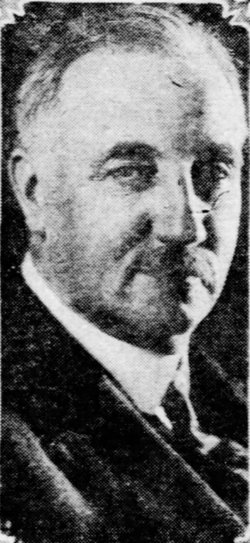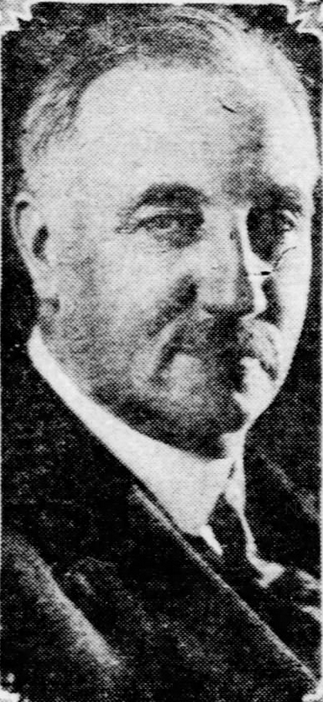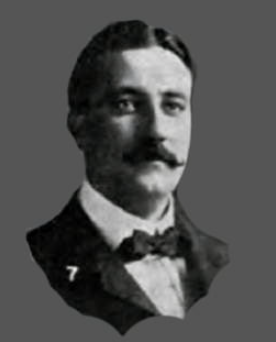After graduating Saint Louis University in 1886, Tom Barnett joined with his brother and brother-in-law, George Dennis Barnett and John Ignatius Haynes, to form the architectural firm Barnett, Haynes & Barnett. The firm continued the traditional motifs of the elder George Barnett. The combined legacy of two generations of Barnett designs were largely responsible for Classicism being the dominate architectural influence in St. Louis.
In 1904, Barnett served on the Commission of Architects for the Louisiana Purchase Exposition (better known as the St. Louis World's Fair) and personally designed the Palace of Liberal Arts for which he earned the fair's Gold Medal for Architecture. The following year, he would win the Bronze Medal for Architecture at the Lewis and Clark Centennial Exposition in Portland, Oregon.
Other projects designed by Barnett included commercial buildings, residential (including private places), and a significant number of religious structures. Surviving examples include the Cathedral Basilica of St. Louis, the Adolphus Hotel in Dallas, Texas, and the Saint Clement Catholic Church in Chicago.
Later in life, Barnett turned his attentions primarily to painting. He studied under Paul Cornoyer, and followed the American Impressionism style. Barnett characteristically used wide brush strokes and vibrant colors. His works typically idealized his subjects, and were emotionally expressive and optimistic.
Barnett's paintings were well received in his lifetime. His works were exhibited at the Panama-Pacific International Exposition, the first exhibition of the Society of Independent Artists in New York, the Cincinnati Art Museum, the Art Institute of Chicago, the Pennsylvania Academy of the Fine Arts, and with regularity at the Saint Louis Art Museum. Barnett won both local and national awards including the Bronze Medal for Painting at the Lewis and Clark Centennial Exposition in 1905, and the First Ives Landscape Prize from the St. Louis Artist's Guild every year between 1914 and 1925.
In 1922, Barnett painted the 12' by 6' mural, Riches of the Mines, in the Missouri State Capitol in Jefferson City. The lunette representing a zinc mine in southwest Missouri was a favorite of art critics who marveled at Barnett's ability to depict drama and beauty in an otherwise bleak and desolate scene.
Barnett was a member of the Chicago Art Guild, National Arts Club, St. Louis Artist's Guild, Salmagundi Club, Chicago Galleries Association, Allied Artists of America, and the American Federation of Arts.
Works by Barnett are held in the permanent collections of the Art Institute of Chicago, the Detroit Institute of Arts, the Saint Louis Art Museum, the art collection of the Missouri State Capitol, the Missouri History Museum, the Museum of Art and Archaeology at the University of Missouri, and the Busch family collection housed at Grant's Farm.
(bio from wikipedia)
After graduating Saint Louis University in 1886, Tom Barnett joined with his brother and brother-in-law, George Dennis Barnett and John Ignatius Haynes, to form the architectural firm Barnett, Haynes & Barnett. The firm continued the traditional motifs of the elder George Barnett. The combined legacy of two generations of Barnett designs were largely responsible for Classicism being the dominate architectural influence in St. Louis.
In 1904, Barnett served on the Commission of Architects for the Louisiana Purchase Exposition (better known as the St. Louis World's Fair) and personally designed the Palace of Liberal Arts for which he earned the fair's Gold Medal for Architecture. The following year, he would win the Bronze Medal for Architecture at the Lewis and Clark Centennial Exposition in Portland, Oregon.
Other projects designed by Barnett included commercial buildings, residential (including private places), and a significant number of religious structures. Surviving examples include the Cathedral Basilica of St. Louis, the Adolphus Hotel in Dallas, Texas, and the Saint Clement Catholic Church in Chicago.
Later in life, Barnett turned his attentions primarily to painting. He studied under Paul Cornoyer, and followed the American Impressionism style. Barnett characteristically used wide brush strokes and vibrant colors. His works typically idealized his subjects, and were emotionally expressive and optimistic.
Barnett's paintings were well received in his lifetime. His works were exhibited at the Panama-Pacific International Exposition, the first exhibition of the Society of Independent Artists in New York, the Cincinnati Art Museum, the Art Institute of Chicago, the Pennsylvania Academy of the Fine Arts, and with regularity at the Saint Louis Art Museum. Barnett won both local and national awards including the Bronze Medal for Painting at the Lewis and Clark Centennial Exposition in 1905, and the First Ives Landscape Prize from the St. Louis Artist's Guild every year between 1914 and 1925.
In 1922, Barnett painted the 12' by 6' mural, Riches of the Mines, in the Missouri State Capitol in Jefferson City. The lunette representing a zinc mine in southwest Missouri was a favorite of art critics who marveled at Barnett's ability to depict drama and beauty in an otherwise bleak and desolate scene.
Barnett was a member of the Chicago Art Guild, National Arts Club, St. Louis Artist's Guild, Salmagundi Club, Chicago Galleries Association, Allied Artists of America, and the American Federation of Arts.
Works by Barnett are held in the permanent collections of the Art Institute of Chicago, the Detroit Institute of Arts, the Saint Louis Art Museum, the art collection of the Missouri State Capitol, the Missouri History Museum, the Museum of Art and Archaeology at the University of Missouri, and the Busch family collection housed at Grant's Farm.
(bio from wikipedia)
Family Members
Sponsored by Ancestry
Advertisement
Records on Ancestry
Advertisement















